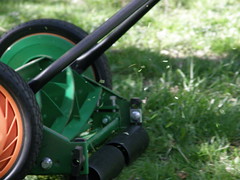
You may have always thought that grass clippings are completely unusable, and throw them away. That is why you can still see them congesting in landfills, where they may take up to twenty-five percent of the total area. That figure doubles during the growing season. It’s a turnoff that more people don’t know that these grass clippings are totally recyclable. In fact, when you just leave them in your lawn, they will become a good source of nutrients after they break down. According to one study, anyone practicing grass recycling can save up to twenty five percent from fertilizer expenses each year. This can add up to a lot of savings, especially with this turbulent economy. Now, if the massive throwing out of these clippings persists, ecological imbalance may arise. According to The Environmental Protection Agency, at least eighteen percent of refuse found in garbage sites are yard wastes that are still usable.
Grass clippings are not waste
You have to bear in mind that grass clippings are not ‘waste’, especially when you know how to compost them. They are organic materials that can easily decompose. Once broken down, they become part of the soil, and augment whatever available nutrients are there. Their decomposition also triggers the activities of earthworms and other microorganisms that can aid in the healthy growth of the grass. Plus, they don’t contribute to thatch problems, contrary to the claims of many. So, when your grass is in a good shape, it’s fit for a garden pool!
However, despite the above, you may still feel a little reluctant about employing this strategy because you consider it difficult. Initially, it can be taxing, but when you get the hang of it, you will find that it’s a worthwhile activity. There are some basic guidelines you should follow when employing grass recycling to be sure that your efforts will not be in vain.
Grass Recycling – Best Practice
First, remember there’s an ideal clipping size when you want your recycling to succeed. The size should be small because larger grass clipping size will take time to decompose, and sometimes don’t reach the ground right away. If that happens, the decomposition process will slow down and might actually have some bad effects on your plants. That said, avoid over watering and fertilizing because this will simply trigger unusual growth.
Second, you have to mow as frequent as possible, or whenever the need arises. Your turfs have optimal height that you need to consider when you mow. It is important that you are within the advisable optimal height to ensure positive outcomes. Here is the list of the optimal height of grass:
- Bermudagrass: ½ to 2”
- Buffalograss: 2 ½”
- Tall fescue: 2 to 3”
- Zoysiagrass: ½ to 1”
- Perennial ryegrass: 1 ½ to 2”
- Kentucky bluegrass: 2”
Third, keep looking for other options and possibilities. There will be days that you are unable to perform your routine because of the unfavorable weather. This is where your resourcefulness should come in. To maintain your desired grass height, use a mulching mower. It will cut the clippings into even smaller sizes, making it easy to decompose. Should this fail you, you can still remove clippings manually. You can compost them, or use them as mulch to enjoy other benefits, such as temperature and moisture regulation.
With grass recycling, you are not only helping yourself save on fertilizer expenses, but also contributing in making the environment more conducive to live in.
